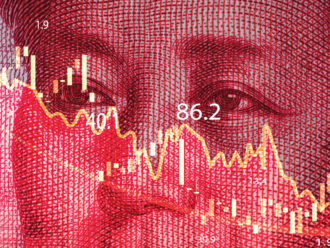HESITANCY REMAINS
Despite the advantages, investors remain hesitant. We are in a different part of the cycle and are returning to a more normal environment, according to Nicolas Robin, a commodities fund manager at Threadneedle Investments.
“Investors do not expect that prices are going to rise like they did during the super cycle when China was fuelling demand, but they are focusing more on de- correlation and diversification and in some cases protection against geopolitical risk. We have received more inquiries over this past year, but at the moment people are looking more at the sector than actually investing in it.”
When they do take the plunge, there are of course different investment paths to take. Some prefer passive funds and equities while others opt for the more active approach. The latter though, requires an understanding of the inner workings of the roll curve. The descent of oil prices below $80, for example, saw the US crude oil markets flipping into contango for the first time in years. This means that longer-dated futures are more expensive than near-term contracts. It has yet to take hold at the prompt end of the oil futures curve, from the front month, November 2014, well into 2015. However, if that changes, it could accelerate selling of the front months by investors who would face added losses from rolling forward positions.
European Brent crude oil has been in contango for several months, but in the US market oil futures through most of 2015 remained in backwardation – when nearterm contract prices are higher than those for later deliveries – due to relatively stronger US market fundamentals and lower inventories.
Robin does not believe that the negative prices in the oil market are sustainable especially with winter being around the corner and that the market will return to backwardation.
“The current environment demonstrates the need for active management,” he says. “The days of outperforming the index are gone because the market has structurally changed and we are back to a pre-China world where backwardation and contango are more cyclical.”
Mayank Markanday, portfolio manager for the real assets fund at Russell Investments concurs that active management is the best way to capture returns in commodities.
“Investors in general understand the commodity markets in terms of oil, gold and some industrial metals, but commodities are a much wider asset class and you can’t ignore sectors such as agriculture and livestock. They can get a broad exposure to the index but a specialist manager knows how to select individual commodity exposure and extract returns through playing the contango and backwardation curve.”
Not everyone agrees. Sutton believes equities can provide long-term outperformance. “Playing the roll curve is difficult and if you look over a five, 10 and 25 year period, equities have delivered higher returns than holding physical assets. There is also the added benefit of positive operating leverage when prices rise.”




Comments